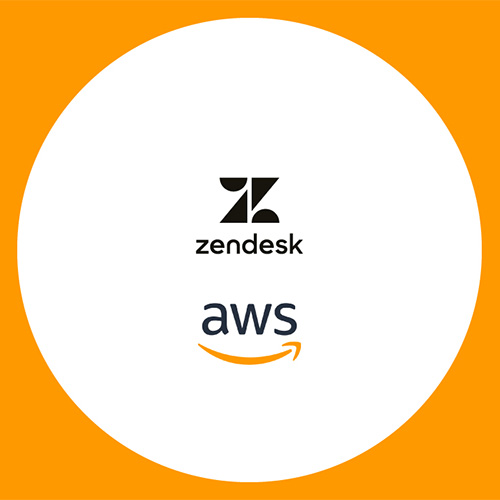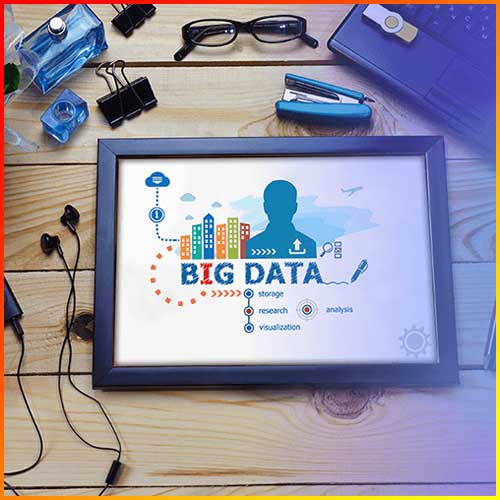Digital Transformation - The Next Frontier
2020-12-08
The world we live in today is far taken out from how organizations conducted their business in the recent past. One of the biggest scourges for modern day businesses – small, mid or large – is the threat of disruption. There is much made of out of disruption as a topic and reams of news print & TB of digital data has been consumed to amplify the disruption threat. Undoubtedly realistic examples have been expounded to build the messaging and the how Digital Transformation is the messiah for modern businesses – incumbents & upstarts alike.
Disruption per se is a difficult topic given its contextual nature and specific to industry, organization and functional areas. Disruption manifests in uncertainty around how organizations understand challenges and, what they should do to respond. There is no silver bullet for organizations to respond or navigate disruptive change.
Given that digital is difficult to define, and that disruption is unavoidable, digital transformation is required to ensure that organizations get the business basics right and gain acuity.
Disruption can be defined as the impact when incumbent organizations are slow in addressing or even unable to address changing customer expectations appropriately rendering them vulnerable to swift new age competitors.
While technology is critical to the digital transformation process, organizations ‘indulge’ in an almost pavlovian response by placing too much emphasis on technology to drive Digital outcomes.
Another classical reflex is to blindly replicate characteristics of disruptors without taking into cognizance the organizational maturity & appetite for scale & change. At best it would provide a mirage of early success but would falter at scale.
In fact, there have been much experiences around successful pilots but none too successful production environments. So, while organizations are showing progress in their understanding of how technology can be better leveraged to accelerate digital transformation, it should be viewed as an enabler, and not a panacea for all things Digital.
Digital transformation should be focused on the holistic wellbeing of the organization, and its extended ecosystem. In an increasingly messaging cluttered world where businesses are clamoring for attention and ‘Born Digital’ Start-ups are redefining the rules of business, Organizations are forced to transform digitally before the market dynamics decimate their existence. This is lending credence to the notion of Thinking, Doing & Acting Digital from the drawing board to the production run and beyond to the display shelves.
Tightly designed, business aligned & integrated digital strategies will be the biggest differentiator between winners & organizations that flounder. In a market that rewards disruptors disproportionately, the biggest gains will go to those that initiate a digital strategy. The markets are unforgiving for entities that are hoping/assuming Digital is hype and the downward spiral for sluggish incumbents is the lowest that the Industrialized world has ever seen. Fast-followers with operational excellence and superior organizational health won’t be far behind. Now, more than ever, organizations have great ambitions, driven by continuous advancements in innovative technology and by the common idea of ‘what’s possible in the digital world’.
• In financial services, we’re looking at the possibility of banking the billions of unbanked people in the world, particularly in emerging markets, with new models of mobile banking.
• In automotive, we’re shifting toward intelligent, shared, driverless electric cars where a digital workplace is possible.
• In healthcare, hospitals and doctors strive to provide a better human experience, including patient care that’s more predictive, preventative, and proactive.
• Retailers are delivering a better multichannel experience to their customers…
• The public sector is finding new ways to provide cleaner, safer, and smarter cities.
The emergence of new channels of client engagement, shifting revenue streams, rapidly evolving consumption models & consequent business calls for rapid transformation as also an ecosystem of partners that enable outcomes and end to end experience journeys covering all key stake-holders.
Clearly defined matrices on Digital outcomes will be key to sustenance & growth of Digital Transformation initiatives. The most common measures are Customer Experience, Workplace Transformation, Cyber Security and Digital Ready Platforms.
Digital Transformation in Action: Leading Manufacture in India for Electrical Gear A leading manufacturer of electrical gear in an highly competitive environment wanted to break away from competition and take a lead in the market. They envisioned themselves as digital frontrunners in the manufacturing industry in India. To achieve this goal they needed high-availability of services to end users ensuring continuous production in factories, which would free up IT teams to focus on innovation and strategic initiatives. Faced with myriad solutions from numerous IT players, this organization attempted to define what Digital Transformation was. For them, Phase 1 of Digital Transformation was to build a Digital Ready Infrastructure stack that translated to IT Optimization, Infrastructure consolidation, Application modernization and automated operations.
Once the goals were envisioned & the metrics & milestones were clearly defined, there was a catalyst team that set to work directly under the command of a management team comprising Business & IT leadership.
Working on a mission mode, they set out achieving the 3 important objectives of Optimization, Consolidation & Automation with a slew of actions detailed below
Approach:
• Consolidated and seamlessly migrated nearly 50 applications across multiple sites to a scalable private cloud environment to meet business growth objectives.
• Built a hybrid IT support model that underpins existing infrastructure whilst optimizing datacenter & network operations. The model offered them complete visibility of their IT operations in the form of granular monitoring, control and reporting, measured against set business outcomes. • The use of automation created a radical shift from their existing, reactive IT operations management environment establishing a more focused, predictive and proactive environment.
• With 99.9% uptime and 24/7 support across all its operations, including manufacturing facilities, warehouses and offices, all services are available to end users at any point in time
Outcomes :
• Met their target for revenue growth, partly due to an expected 10% reduction in operational costs.
• There’s also been a 15% reduction in risk by shifting from its existing IT operations management strategy to a more focused, predictive and proactive management approach.
• Automation has enabled them a 25% improvement in performance as a result of reduced downtime.
• Improvement of between 15% and 20% in internal customer satisfaction because of the reduction of escalations and customer complaints.
• IT management time released from mundane IT chores to initiatives that provided business the competitive edge.
• Their digital transformation strategy is becoming a key differentiator in a highly competitive market
The success of a small footprint ‘Land & Expand’ approach has provided the impetus for the wave 2 of Digital Transformation that encompassed Customer Experience, Workplace Transformation & IT Assurance. This example is a clear beacon for a well defined approach of defining goals, clear mandates, catalyst team, metrics & measures and a phased approach to Digital Transformation.
End Point In the digital era, there is no room for complacency. To stay ahead, companies must build incremental business value by leveraging on technological advancements and stay adaptive. At the same time they must explore new business models continuously as “anything is possible in the world of digital”
See What’s Next in Tech With the Fast Forward Newsletter
Tweets From @varindiamag
Nothing to see here - yet
When they Tweet, their Tweets will show up here.



























